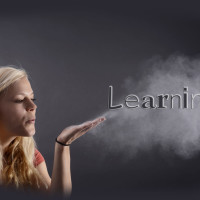In this guest blog Chris Taylor, Head Teacher at Patcham Infant School and Nursery Class, highlights some of the brilliant effects Building Learning Power has had on learners at his school. Take it away, Chris.
A few weeks back Patcham Infant School hosted a Creative Curriculum evening for Key Stage 1 parents. This meeting is held annually to give parents an overview of how we deliver the requirements of the curriculum. This was the third time I have attended the meeting as head teacher which is led very ably by Helen and Stuart our Deputy Head and Assessment & Maths Lead.
There was quite a lot of familiarity between the first meeting I attended as a novice head teacher new to school and our most recent one. However, sitting there now, what I saw was a remarkable transformation from an innovative approach to curriculum planning and delivery, to a deeper one that is enabling our very young children to develop learning skills that will support them throughout their schooling and beyond.
In my first of these meetings, in 2014, I was very excited to hear about Explore and Learn: a creative method to ensure children’s experiences throughout their school day were enabling, interesting, relevant and varied. This model of learning is not afraid to: think outside the box, take risks, ensure the demands of the curriculum don’t suppress the needs of the children or dampen teachers’ spirits and philosophy for what is right in infant education.
Having worked with Maryl Chambers at my previous school and introduced Building Learning Power there, I knew that the development of learning characteristics at Patcham Infant School and Nursery Class would blend so well with the Explore and Learn model. Explore and Learn could be seen as an extension of the Early Years Foundation Stage and could support the Characteristics of Effective Learning. What was lacking from this approach was the explicit nature of how children could develop their own learning capacities, and use the language of learning to take real ownership of their education, and this was where Building Learning Power would step in.
As new head, my vision was to build on all the great work the previous head and her staff started. This I shared with my new team and highlighted a way forward to enhance what was already in place. I am blessed to be working with a team of hard working, dedicated and inspired people who recognised how the explicit nature of developing children’s learning capacities could strengthen their metacognition.
To us at Patcham, Building Learning Power is a way of realigning classroom practice; it is about developing a culture within our school and community, it is not something that is done to the children but something that is woven into all areas of learning. Over the last 2 years we have encouraged the notion of great effort leading to great progress. We have been learning to accept mistakes as an opportunity to offer appropriate feedback and learn from it. We have taught children how to take action to improve in their learning as well as embracing challenge and sticking at it in the face of that challenge. We have also encouraged children to be inspired by the success of others and ‘magpie’ ideas to create successes for themselves.
As a result we are seeing children being adventurous, creating ideas independently and socially with their peers. Children are learning to question and imagine possible solutions; they are adept at showing initiative and are becoming self-evaluative.
Our key focus has been planning and designing activities deliberately and explicitly so that it is stretching children’s learning habits. We have been making small habit shifts and are modelling what effective learners look like; we make mistakes and have become more conscious about the language we use in the classroom. We are more aware about varying our groupings and providing opportunities for children to choose to work independently, in groups or with the teacher. The learning process is celebrated in our displays, not just the finished product and our celebrations are for effort, responsibility and resilience. What we are witnessing is that these small shifts are creating an enthusiasm for children to take more responsibility in their learning.
I like to think of this development as the mayonnaise effect, adding the perfect ingredients just at the right time; making a series of small adjustments to our teaching habits. We often reflect on:
- How we speak and write about the children
- What we model about learning
- How we design and involve children in designing activities
- The responsibility we put on children when selecting resources
- How we choose to display learning and celebrate successes
- How we organise the classroom
The development of Building Learning Power is a long and faltering journey that can only work when it is shared across the whole school. Leaders need to be committed to this approach and over time develop a culture of openness and inquisitiveness. We still have a long way to go in fact; we have just again started introducing the notion of resilience in the Early Years and are reviewing our developments in Key Stage 1.
It remains an exciting work in progress and we have by no means accomplished everything we hope to achieve. However, it is one that we share with enthusiasm and pride at meetings like our most recent one.
I am already looking forward to our meeting next year!


No comments yet.